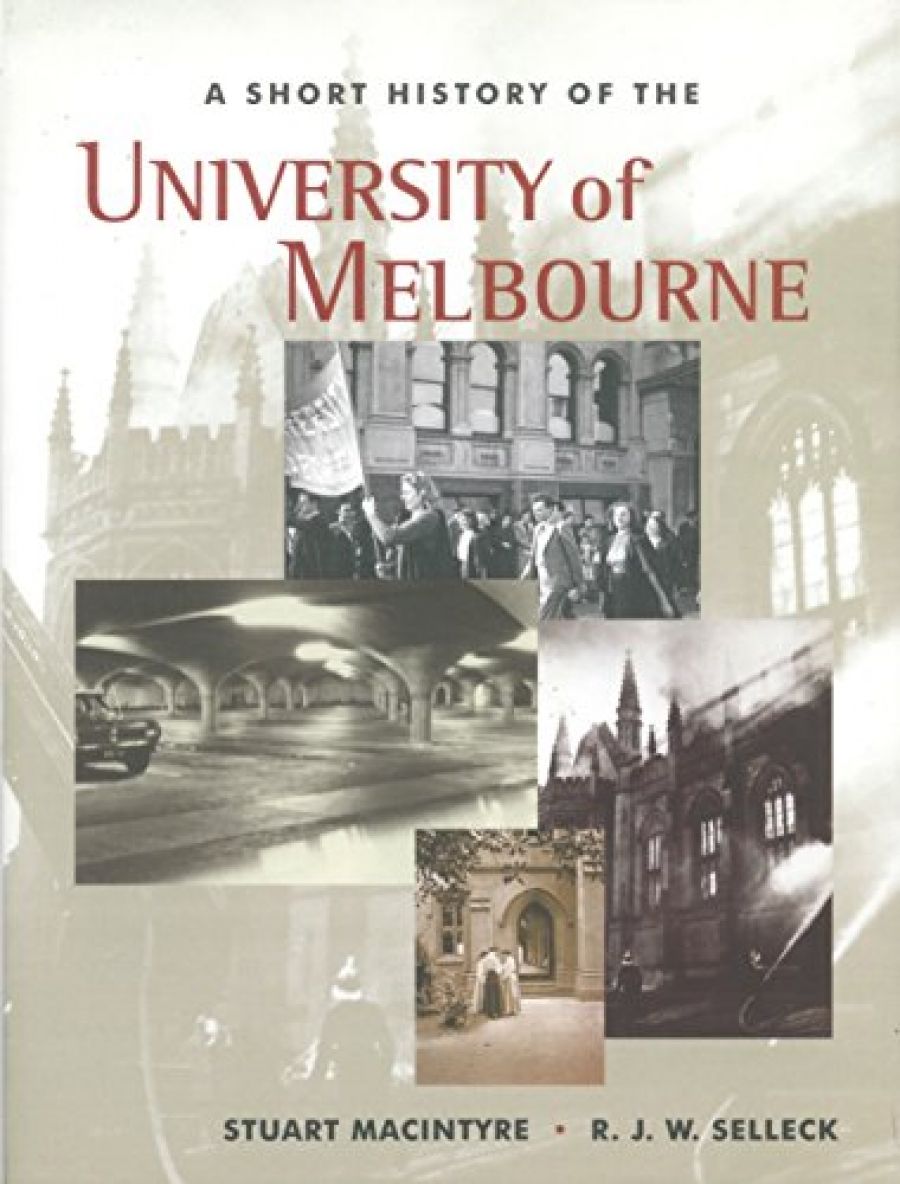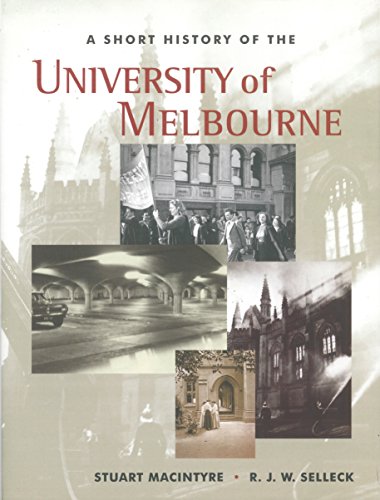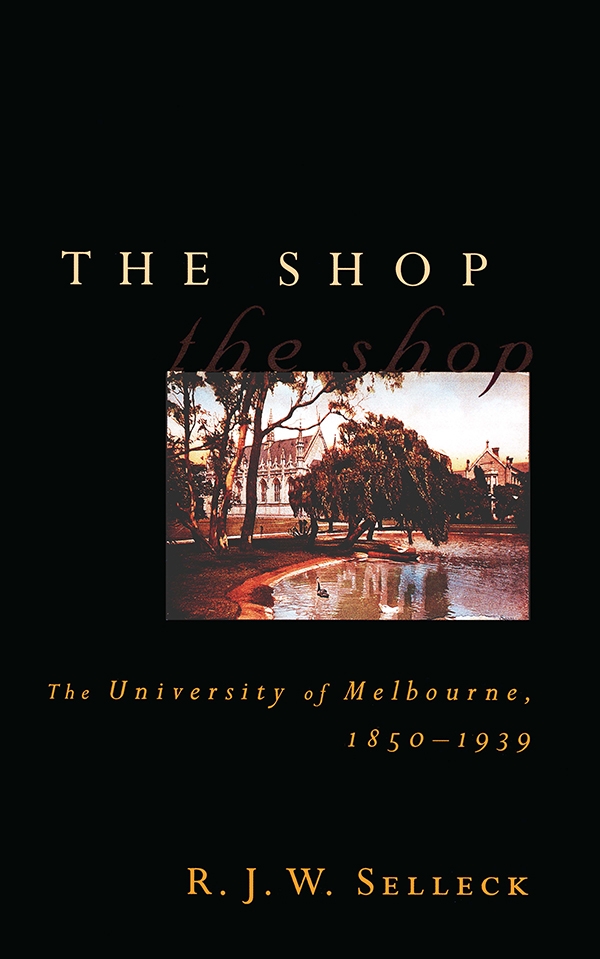
- Free Article: No
- Contents Category: Education
- Review Article: Yes
- Article Title: The Good Old School
- Online Only: No
- Custom Highlight Text:
I have a dreadful confession to make: I chose not to study at the University of Melbourne. Got the marks, went elsewhere. My family and teachers attributed this bizarre behaviour to the perversity of adolescence. It is true that I knew little about myself, and even less about the world, but I could see that I would not last a week at the University of Melbourne. One look at the place had put me right off. Coming from a provincial high school, you could feel it in the air – the automatic, often unconscious, snobbery of rich private schools. You can find them today weighing into current debates with their personal testimony, citing the private benefits that their University of Melbourne degree brought them, asserting that they could have paid a lot more for it than they did, attacking compulsory amenities fees in the same breath, and (noblesse oblige!) finding ingenious ways to create safely limited opportunities for the ‘genuinely disadvantaged’.
- Book 1 Title: A Short History of the University of Melbourne
- Book 1 Biblio: MUP, $24.95 pb, 193 pp
- Book 1 Cover Small (400 x 600):

- Book 1 Cover (800 x 1200):

- Book 2 Title: The Shop
- Book 2 Subtitle: The University of Melbourne
- Book 2 Biblio: MUP, $80 hb, 875 pp
- Book 2 Cover Small (400 x 600):

- Book 2 Cover (800 x 1200):

A quarter of a century on, working at the place as an adult, I am unrepentant. The lake, where dissenters were routinely dunked, was drained in the 1930s, but state school kids are still viewed as interlopers. The University of Melbourne has long regarded itself as an élite institution, and elements within it have difficulty distinguishing between social status and intellectual ability.
The colony of Victoria had barely achieved separation from New South Wales when it was thrown into turmoil by the gold rushes. Spooked, to put it mildly, by a situation in which the labourer was not only worthy of his hire but could name his price, Melbourne’s upper crust set about creating civic institutions to bring an air of stability to the unruly frontier town in which they found themselves. Greek and Latin were made compulsory at the university, a retrograde step even then.
The first chancellor was conservative Anglo-Irish lawyer Redmond Barry. His initial proposal, which sited the university at the eastern end of Bourke Street, met with unexplained obstruction, until construction started on Parliament House. More accustomed to giving than to receiving such slights, Barry and his cohort (well-to-do, male and mostly quite young, in their thirties or forties) devised an administrative structure for the university that allowed them, and their anointed successors, to keep control deep into the following century. First there was the Council, which oversaw the appointment of the first professors, who in turn formed a Professorial Board (essentially to fight with the Council). Later, when there were graduates to elect it, came a Senate. The power struggles between these three bodies were as bizarre as they were complex. Possibly the only consensus they ever achieved was in their opposition to the admission of female students. An Age editorial in 1912 remarked that ‘the plain truth about the professors would make the Victorian taxpayer first laugh, and then go for an axe’.
There is a humpty-dumpty quality about the language of the Barry gang: when they used a word, it meant what they chose it to mean. They required of their staff and students an impartiality in public affairs of the kind that Senator Alston requires of the ABC. During the Boer War, for example, the ‘neutral’ position was enthusiastic support for Australian engagement. (The University Library’s first significant donor, George McArthur, was ostracised for his opposition to the war and committed suicide in 1903.) As for religion, the university was established as ‘secular’: not to promote agnosticism, but to keep peace between Christians. The four largest denominations – Anglican, Presbyterian, Methodist and Roman Catholic – were allocated land for ‘affiliated colleges’. These were built in order of their church’s wealth and influence, Anglican Trinity being established nearly fifty years before Catholic Newman.
For a long time, only graduates of the three Anglican universities – Oxford, Cambridge and Trinity College, Dublin – were considered for professorial appointments at the avowedly secular University of Melbourne. By 1910 colonial-educated Walter Murdoch had proved himself a gifted teacher, but the chair of English went to Robert Wallace, an Oxford educated Scot whose accent was unintelligible to most of his students. The selection panel may have been wise to shun the local man. Yorkshireman George Cowling, who succeeded Wallace in 1928, was scorned by students because he had ‘the wrong English accent’ and (worse) ‘the wrong degree, an M.A. from Leeds’: Melbourne students, as much as the university’s founders, wanted to believe that they were in ‘an antipodean Oxford’. Ernest Scott broke the hex: he gained the chair of History with no university qualification of any kind. It helped that he had written a couple of books; it also helped that he was a member of the Melbourne Club.
Institutions have their own internal logic. In 1876 an arts student, James Hackett, wrote to the newspapers complaining about the disruptive antics of medical students at that year’s commencement ceremonies. The medical students responded with their own letters to the paper: the disturbance was ‘harmless fun’, a show of affection for ‘the good old school’. A group of them bullied Hackett into signing a written apology, then made him walk through the lake. Following an enquiry, the Professorial Board delivered an official reprimand —to Hackett. It was the practical demonstration com-ponent of Victim Blaming 101, vital study for generations of Australian lawyers and politicians. Hackett had been disloyal not only to his peers, but to the university: he was further accused of ‘cowardly conduct’, ‘tampering with a witness’, and ‘being a ringleader in the disturbances’.
From its inception, the University of Melbourne was as much about constructing power as it was about providing opportunities for learning. Entry to the professions was controlled by vested interests. In 1854 Barry, blithely exploiting his dual role as Chancellor of the University and Judge of the Supreme Court, set the rules for admission of barristers to practise in Victoria: inter alia, they were required to be male, to have ‘the accomplishments of gentlemen’, and to be wealthy enough to work at no trade or business for three years prior to their examination. During the 1880s Melbourne’s leading barristers blocked the implementation of an Act of Parliament that removed the distinction between barristers and solicitors. The medical faculty was equally shameless, waging protracted bureaucratic warfare against the admission of female students, dominating the university’s building programme, and getting away with such inadequate teaching that many stu-dents left to complete their qualifications overseas. In 1909 Professor Richard Berry (a eugenicist whose extreme views belong in a horror movie) sought to have the university grounds closed to the public on weekends and evenings: he had caught couples having sex three times. The Council agreed to close the grounds after seven p.m.; there is no record of anyone asking the professor how often he went looking.
R.J.W. Selleck’s The Shop – along with his Short History, co-authored with Stuart Macintyre – is welcome evidence that this once insular institution is developing the capacity for self-analysis that it needs if it is to attain the ‘world class’ status it craves. Although both are presented as sesquicentenary publications, neither is the kind of sanitised history usually brought forth at anniversaries. Selleck and Macintyre understand the subtlety of official records: as Selleck puts it, ‘minutes [of meetings] contain what the majority wants them to contain’. Their sympathy towards the dilemmas facing administrators, and their lucid advocacy of effective leadership, give real depth to their analysis of educational policies. The Short His-tory is an especially valuable contribution to the current debates.
It has to be said, though, that MUP have cut some dangerous corners: The Shop is riddled with trivial errors of the kind that a hurried writer is bound to make, and that a professional editor should correct.(I enjoyed the reference to J.G. Frazer’s ‘very influential The Golden Bowl’.) The Short History could have done with a more rigorous structural edit: the narrative pace is uneven, and there is a pervasive sense of stories being cut off before they are finished. After its recent upheavals, the ‘new look’ MUP has a lot to prove, and to have bungled these landmark books is an inauspicious start. Writers as gifted as Selleck and Macintyre deserve better.
Selleck has a Swiftian way with corporate doublespeak. There was a time, not long ago, when retribution fell hard on anyone taking such an independent line. The Shop is an unexpected delight: lively, thought-provoking, and frequently laugh-aloud funny, it ranges across the history of the ‘learned professions’ and interrogates the whole ‘idea of a university’. They’ll be choking on their tea down at the Melbourne Club. For everyone else, Selleck offers an opportunity to reflect on educational institutions and how their workings affect the rest of society.


Comments powered by CComment